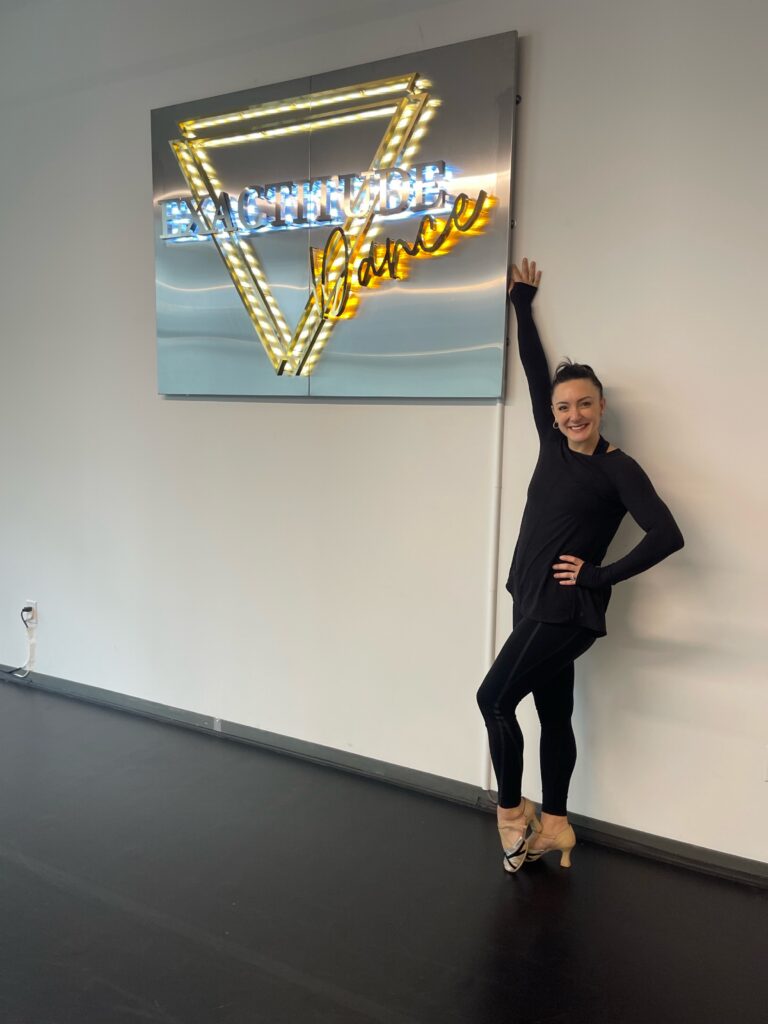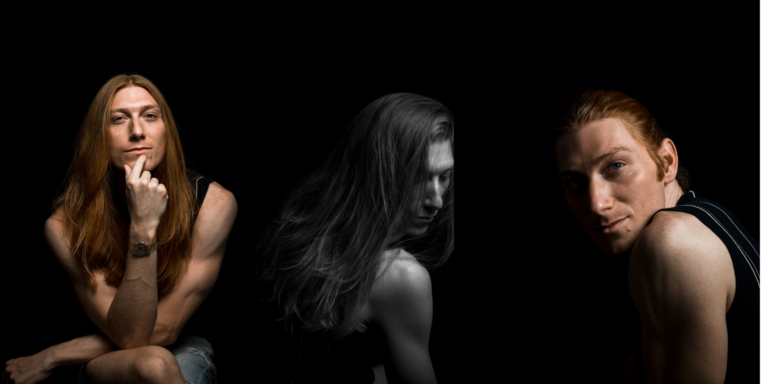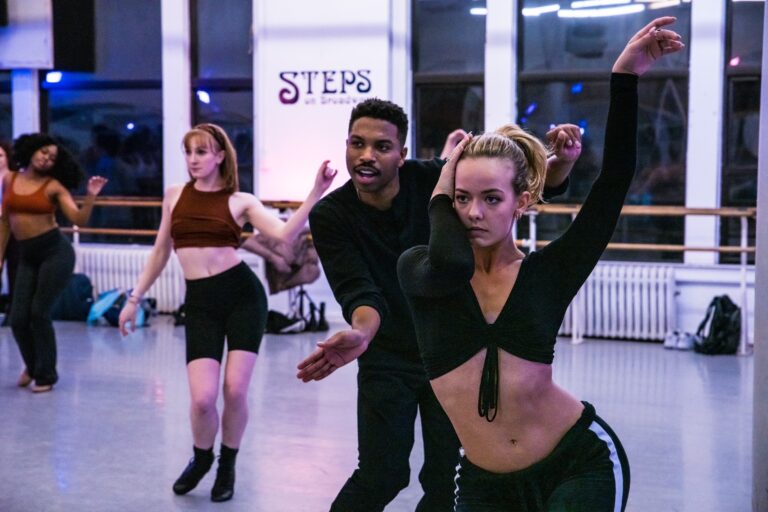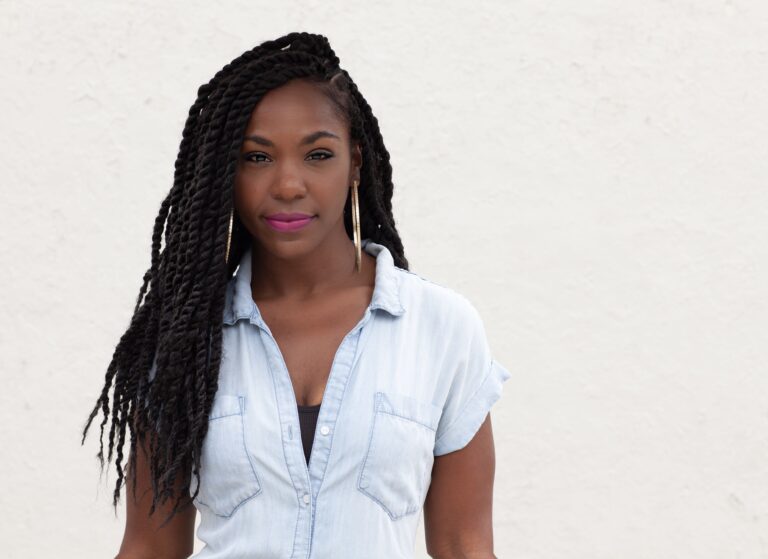
Whether you’re dancing at Radio City Music Hall with a full orchestra or in a dance studio with a small speaker, precision-style choreography is tied to the music. Timing is crucial. Often, as a precision dancer, you’re balancing multiple things at once: A bevel, an arm, and a head can all switch on one count, explains Traci Reszetylo, Radio City Rockette and founder of Exactitude Dance.
Of course, the counts aren’t just numbers; each count is linked to a specific part of the music and has its own feeling. Reszetylo says this is where musicality comes in. Without it, your dancing runs the risk of feeling flat. “Linking musicality together with the movement creates an actual performance and creates this burst from the stage or from the room,” she adds.
Even in precision dance, she says, “It’s not just moves to the music. You have to feel something, as well, no matter what kind of music it is.”
With 22 years of Rockette experience, along with a few seasons as dance captain, assistant choreographer, and swing, Reszetylo is now training the next generation of precision dancers. In 2020 she started Exactitude Dance, teaching workshops focused on precision styles alongside nationally renowned choreographers. Dance Teacher talked with Reszetylo to hear all about how she teaches musicality to her precision dancers.
Teaching Tips: Play the Music First
Before she teaches any choreography, Reszetylo plays the music a few times for her class. She explains, “[I do this] so they know the feeling, they know what we’re saying. Sometimes I’ll even say to them, ‘Listen to this part of the music. Don’t listen to that part of the music. That’s what we’re going to be moving to.’ ”
She says that when the music is played before choreography, dancers can establish the tempo and vibe and approach the combination with this information in mind. Furthermore, getting familiar with the music first will give impetus to the movement. Reszetylo often asks her students, “Where is the movement coming from?” For example, “If it’s like a big cymbal crash, how are you going to show that through your movement?”

Calm Down in Faster Choreography
Precision choreography can be brisk. For some dancers, fast-paced choreography can lead to moving in a way that feels out of control and frantic. When the choreography gets fast, Reszetylo tells her dancers “to calm down a little bit more so you can find the end of that position where it’s nice, clear, tidy, and aggressive. That’s where it all becomes one.” She elaborates, “You have to settle into the music before it even actually begins.”
Reszetylo explains that in precision, the movement will always be strong, no matter the tempo. “Even if it seems like a more fluid kind of movement, there’s still a lot of muscle, aggression, and momentum behind it.”
Vocalize the Counts
Counting is key to nailing precision choreography. However, counting mainly in your head likely will make your dancing monotonous. When learning and rehearsing choreography, saying the counts with musical phrasing can add life to your movement, says Reszetylo.
Further, students don’t have to rely solely on their teachers to musically vocalize the counts, says Reszetylo. After class, she has told her students to go home, take the choreography, listen to the music, and vocalize it for themselves.
“If you vocalize the counts in the movement with what’s happening in the music, it kind of all comes together.” She continues, “It’s not necessarily just counting. If you vocalize it within your body, then your body is going to be doing that as well. And you probably will feel that musicality a little bit better than just counting counts in your head, because that’s when it can get really, really flat.”
To track their progress, Reszetylo recommends that dancers film themselves before and after vocalizing the choreography.
Start With Joy
While counting the music and muscling out the movement is important in the precision world, equally necessary is the joy, says Reszetylo.
“[Precision technique] is just the way we do things, like the pathways of the arms or thinking of the music in the same exact way. But the basis is dance. It’s why we’re here, doing what we love to do,” says Reszetylo. “I like to start with joy and the dancing and then break it down from there into the details.” She explains further, “You can always add details into a dance, and it’s very hard to add dance into details.”
Likewise, the constant attention to detail can overshadow a dancer’s individual musicality. To combat this, she tells her dancers: “You always want to have a little fire in you, that something else is also happening behind the moves, which makes it so much more interesting.”
When the choreography gets tough and the details seem overwhelming, Reszetylo urges dancers to remember that “the dancing comes first, the feeling comes first. Musicality comes first. Because that’s why we became dancers, right?”
Reszetylo created a playlist for DanceTeacher+ full of songs that she’s drawn to, both as a dancer and choreographer.
“Such a Night” and “Higher,” by Michael Bublé
“Bublé is one of my go-to’s. Big band has so many complex harmonies and syncopated rhythms, which makes it so fun and interesting to choreograph to the music.”
“(Sweet Sweet Baby) Since You Been Gone” and “Rock Steady,” by Aretha Franklin
“Aretha is another favorite of mine. Just listen to her greatest-hits album and the blend of so many different styles. Blending gospel with jazz, blues, and R&B, dancing to her music really lets you let go and actually feel the music. Aretha is as pure as it gets. Her funk and R&B speak for themselves.”
“Miami 2017” and “Stiletto,” by Billy Joel
“Billy Joel is a classically trained pianist who delved into rock and roll and pop. That’s why you can hear that his music is derivative of jazz and all of the standard tunes. That’s why it is perfect for the style of dance I choreograph!”





